
Want to create or adapt books like this? Learn more about how Pressbooks supports open publishing practices.

Tourism Policy, Planning, and Development
General overview.
Tourism policy, planning, and development are all very connected and do not just occur when a geographic area decides to be a tourism destination. Policy, planning, and development are included in numerous aspects of communities.
continue but from different perspectives. An example would be the use of the destination/product lifecycle, discussed later. It is important to understand what tourism planning and development are individually as well as collectively. Planning is essential to effective development. Tourism is not always a beneficial industry for a geographical area, but without planning tourism can damage the area, including natural and cultural resources (Morrison et al., 2018). A destination might consider “Who, What, When, Where, Why” when working on a tourism plan. The same can be considered for tourism development, as well as other topics included in this alternative textbook (e.g., marketing and promotion).
Tourism Policy
A policy is essentially a course of action taken by some organization or institution (e.g., government, business, educational institution). A tourism policy as defined by Edgell et al. (2008) “is a progressive course of actions, guidelines, directives, principles, and procedures set in an ethical framework that is issues-focused and best represents the intent of a community (or nation) to effectively meet its planning, development, product, service, marketing, and sustainability goals and objectives for the future grown of tourism” (p. 7). Stated more simply, Hall and Jenkins (1995) suggest “tourism public policy is whatever governments choose to do nor not to do with respect to tourism” (p. 7-8). A tourism policy is essentially a framework including guidelines, goals, and initiatives to work toward achieving the goals. Where as an act by government, such as the Travel Promotion Act of 2009 establishing Brand USA, is a law or statute.
A policy for international travel is having a current passport and for many countries a Visa. The application for a Visa to visit a foreign country allows countries to approve who may visit the country and not allow individuals for a variety of reasons (e.g., security threat). The U.S also has the Visa Waiver Program, which is an agreement with 40 countries allowing citizens of those countries to visit the U.S. for business or leisure travel purposes for up to 90 days without a Visa, provided they meet other requirements (U.S. Department of State – Bureau of Counsular Affairs, n.d.). The countries with the Visa Waiver Program also allows U.S. residents to travel to the respective countries with fairly similar criteria. The purpose of requiring a Visa is to regulate travel between countries. The Visa Waiver Program is an agreement to allow citizens of certain countries to visit without having to obtain a Visa if certain criteria are met. This essentially makes it easier to travel between the respective countries.
The International Trade Administration includes a Tourism Policy Council (TPC) to ensure national decision-making considers the national interests of travel and tourism (International Trade Administration, n.d.). The TPC provides resources to help with such issues or challenges as recovering from disaster, and links to Center for Disease Control (CDC), and many other potential issues or challenges for travel and tourism in the U.S.
At more local levels, Morrison et al. (2018) suggest tourism destinations can develop policies for development, marketing, tourist experiences, human resource issues, tourism organizations (e.g., structure), relationships throughout the community, quality assurance, and supporting services (e.g., safety and security).
Policy Setting Process
There are a series of recommended steps for the establishing policy (Morrison et al., 2018). First, identifying and assessing the circumstances related to the issue. This includes understanding contraints that you and/or will face. Constraints can be internal (e.g., locals’ awareness of tourism, training and education of employees in hospitality and tourism, budget) or external (e.g., economy, price of gas, natural disaster). The tourism organization/local industry has more control or ability to do something about internal constraints, while have little or no control over external constraints. For example, nothing can be done about bad weather or if a natural disaster occurs. However, if locals are not aware of tourism in the local community, education and information can be shared to make locals more aware. This step in the process can also make you aware of new opportunities (e.g., an attraction to develop, new target market).
The next step is typically to create a policy statement to provide guidelines, goals, and initiatives to help guide the organization, destination, etc. While not directly a policy statement, most CVB vision statements include something that provides a guideline with somewhat vague goals. For example, it might be to maintain and/or improve the quality of life for residents of the destination by promoting the destination for tourism and conventions, which would include an economic goal. A policy statement for this vision would be more specific with the goals and initiatives identified to fulfill the goals.
Consultation with government, local tourism businesses, and any other stakeholders is next. This step is to get feedback about the policy statement. Following the consultation and depending on the outcome, the policy statement might be rewritten or modified. Next would be another round of consultation and then rewriting until the the policy statement is approved.
Now is time to implement the policy statement. This will include identifying specific roles of individuals, committees, organizations, etc. This step also includes developing the budget and timeline for the initiative(s).
Finally, those involved evaluation the policy. Were the goals achieved? Why or why not? However, you do not wait until the end of the established timeline for the policy to evaluate. There should be constant assessment to identify if you are likely to achieve the goals. Remember there are numerous constraints that are external (e.g., weather, natural disaster) that might dictate the need to adjust the initiatives and other efforts related to the tourism policy.
Tourism Planning
Prior to tourism planning it is important to consider other types of planning for a community or geographic area. Planning is not new. Gunn and Var (2002) indicate physical planning goes back to early Greek and Roman times. Planning is done to manage visual appearance and land use. However, planning incorporates many disciplines and perspectives: “Planning is a multidimensional activity and seeks to be integrative. It embraces social, economic, political, psychological, anthropological, and technology factors. It is concerned with the past, present, and future” (Rose, 1984, p. 45).
Gunn and Var (2002) suggest when plans (not only tourism, but community, etc.) are created they often include very high or lofty goals and it is difficult to actually achieve such goals for numerous reasons. Planning is very vague and has no real theory behind it. For community plans the general goal is a better place to live. For tourism planning the goal might be to provide visitors with a good experience. As stated earlier, an effective tourism plan can also maintain or even improve the quality of life of residents, not just economically but the attractions provide activities for local residents as well as tourists.
Morrison et al. (2018) offer three primary reasons for tourism planning. The first two are related to impacts, to maximize the economic benefits and minimize damage to resources (i.e., natural, environmental, cultural). Another reason for a tourism plan is that tourism is constantly changing for many reasons (e.g., visitor expectations, needs, motives; politics; economy; technology). As a result, the plan needs to be adaptable.
Not all destinations have a tourism plan. Some reasons for not having a tourism plan include (Morrison et al., 2018):
- Objections – it should be taken care of by the private sector and there is no need for a formal plan.
- Cost – includes market research, consultations, and a lot of time.
- Complex – tourism is affected by numerous things, such as government policies, dynamic of the community and stakeholders.
- Diversity – various sectors involved directly or indirectly in tourism.
- Seasonality – in many destinations the jobs related to tourism can be seasonal (e.g., beach destinations, snow skiing destinations).
- Unpredictability – keep in mind the numerous things that affect and make tourism complex (e.g., natural disasters, crises, politics, economy).
Gunn and Var (2002) add the following tourism planning barriers:
- Lack of awareness of tourism impacts – which is ironic because it is a reason for a tourism plan.
- Do not understand tourism development – there needs to be a plan for developing tourism and then maintaining and even upgrading tourism (e.g., attractions, facilities, etc.).
- Inadequate infrastructure – might have deteriorated attractions, facilities, etc.
- Unorganized – no leadership to guide the process.
- Politics – usually various opinions among stakeholders (e.g., businesses, government, other stakeholders).
- Lack of hospitality training.
However, there can be serious consequences of unplanned tourism. In general, unplanned tourism is not likely to be sustainable tourism economically, environmentally, socially/culturally.
Tourism Planning Models or Approaches
Morrison et al. (2018) provide a seven step tourism destination planning model:
- Background analysis – including a SWOT analysis and assessments of government policies that affect tourism, inventory analysis (e.g., attractions, accommodations, restaurants, etc.), current demand for tourism at the destination.
- Research and analyses – identify/map locations of the inventory analysis, market survey of current visitors (e.g., motivations, what they like to do) and non-visitors (e.g., why have they not visited?, awareness of the destination, image/perception of the destination), competitive analysis (e.g., who are your competitors?, how can you differentiate your destination from competitors? what do and can you work to improve?).
- Where are we now? (position statement).
- Where would we like to be? (vision statement). Then, identify critical success factors or ways to measure and determine if you achieved your vision.
- Setting goals, establishing strategies, and setting objectives – develop a policy or (e.g., stimulate the economy). Set goals or achievable outcomes. Identify alternative strategies to achieve goals and select the most desired of the alternatives given environment or conditions (e.g., economy, resources, politics). Set objectives which are more short term goals to help monitor if you are going to achieve your longer term goals. If not, remember a tourism destination plan should be adaptable, which is the next step.
- Develop a plan – identify organizations and people to be involved and their roles, funding sources and budgets for different aspects of the plan, activities to implement your plan.
- Implement and monitor the plan – While the plan should be developed by input and participation by numerous stakeholders, it is generally implemented by a local tourism agency or organization (e.g., CVB). But, there should be committees derived of various stakeholders to which the agency is accountable. This helps monitor progress of implementing the tourism destination plan and adapt if needed.
- Evaluate the plan – measure performant of the various parts of the plan against the goals (e.g., did you achieve the goals? Why or why not?). Use the evaluation to see if and how you might adapt the plan moving forward.
Tourism Development
The tourism destination plan helps guide development of tourism. Destinations will be at various stages of development. So, it is not that the tourism plan is just for a destination just getting involved in tourism. As suggested by Mason (2003). development and change for destinations occurs as time progresses. The characteristics, motives, preferred activities and attractions, and many other things change over time and destinations redevelop to remain competitive. A fairly common way to view this is commonly referred to as “Butler’s Tourism Area Lifecycle”. There are five main stages to Butler’s Life Cycle (Butler, 1980):
- Exploration – at this stage there might be some tourism but not really an effort to provide traditional or common tourism attractions, facilities, etc. This stage mostly include tourists visiting facilities and local resources used by residents.
- Involvement – this is the beginning of the destination offering some facilities for tourists. The destination begins to more formally organize and provide or improve infrastructure, some attractions, and facilities for tourists at a local level.
- Development – the destination begins marketing and promoting the destination. This stage also begins development from outside organizations and/or businesses. The destination will begin to develop and look more like a noticeable tourist destination. More and more tourists will likely visit the destination as development progresses.
- Consolidation – at this stage the rate of increase in visitors will begin to decline. The rate of development will also begin to decline. Residents may become opposed to tourism with all of the non-locals who are in the community and there is more traffic and congestion. Some of the older attractions, facilities, etc. may also begin showing degradation.
- Decline – number of visitors will be begin to decrease as competitor destinations might have more appealing attractions, infrastructure, etc. The degradation of attractions, infrastructure, and other aspects of the destination will continue and possibly turn into what Butler (1980) refers to as a “veritable tourist slum” (p. 9).
- Rejuvenation – this outcome can occur by development of a new man-made attraction, which is likely to be followed by improvement of surrounding attractions, facilities, and other tourist needs. However, if competitor destinations also rejuvenate, the competition will remain and rejuvenation might be much less or possibly not rejuvenate and potentially decline. Another way Butler (1980) suggest rejuvenation can occur is to utilize natural resources that might not have been part tourism product throughout previous tourism development and marketing and promotion.
Butler (1980), as well as many other tourism scholars, suggest all of these efforts or stages of Tourism Area Life Cycle should be a collaborative effort within the community. For example, the government could offer incentives for private development of a new man-made attraction.
There are a number of potential ways to develop tourism. One way is to develop a “flagship” attraction, which are major attractions like a theme park (e.g., Disney Land, Disney World) and/or utilize natural attractions (e.g., ocean, lake, National Park). Gunn and Var (2002) offer recommendations for tourism destinations to develop destination zones. The zone would have clusters of attractions (e.g., museum districts) and a corridor connecting the clusters with some form of transportation. Clustering attractions provides tourists with more to do in a closer area so they spend more time at attractions and less traveling between attractions. The destination zone and clustering is a great example of planning and development and how integrated the two initiatives should be.
Morrison et al. (2018) suggest tourism involvement should be holistic. The holistic view would include consideration of the product (e.g., attractions, events, support facilities, transportation, infrastructure, etc.). Respective destinations could also ensure people (i.e., hosts, guests) are included to ensure there is community awareness and inclusion of local businesses, organizations, and residents. Morrison et al. (2018) also suggest visitor management (e.g., signage) and identifying the visitor mix of the destination. Packages (e.g., all inclusive, hotel and tickets to attraction) and programs (e.g., events, festivals, other activities) could also be developed to attract more tourists. However, destinations should approach tourism development and/or redevelopment from a sustainable approach to avoid overtourism (i.e., too many tourists).
Sustainable Tourism Development
Tourism development should also be sustainable and include the three impacts of tourism (i.e., economic, environmental, social/cultural).
The United Nations (n.d.) proposes 17 goals to consider for economic development, which include economic (e.g., “No Poverty”, “Decent Work and Economic Growth”, environmental (e.g., “Clean Water and Sanitation”, “Affordable and Clean Energy”), and social/cultural (e.g., “Good Health and Well Being”, Quality Education”) goals. The 17th goal is “Partnerships For the Goals”, which are very important for tourism destinations, not only in tourism destination planning and development, but other aspects such as marketing and promotion.
Relating development back to the impacts of tourism (i.e., economic, environmental, social/cultural). Sustainable development should include these impacts. Morrison et al. (2018) through applying the triple bottom line to tourism offers some examples of efforts for sustainable development in each of the three areas:
- Social – include residents, be sure development improves or at least maintains locals’ quality of life.
- Environmental – protect resources, educate visitors and residents of ways to protect resources.
- Economic – new employment opportunities, increase spending of visitors, find ways to have businesses purchase locally to minimize leakage.
Tourism Development Strategies
Various strategies exist to develop tourism. For example, flagship attractions (e.g., large amusement parks, National Parks) can provide something unique to market and promote. Development of clusters of attractions (e.g., museum districts) provide several attractions near each other so visitors do not have to drive long distances between attractions. Such districts could also include development of a circuit or trail for transportation via hiking or biking. Aside from man-made attractions, events can be developed by destinations to highlight such things as cultural or other unique aspects of a destination.
Considering all of the possible options of tourism development provides a holistic view. Not only the examples of attractions and events, but packages and programs can developed. Destinations need to also consider all of the elements of tourism in development (i.e., attractions, infrastructure, transportation, built/support facilities, service quality/hospitality). Again, not only businesses and organizations directly involved in tourism, but all stakeholders (e.g., residents, other local businesses) should be included and/or given the opportunity to provide feedback regarding the tourism development plan.
The general goals of tourism development should include improving visitors’ experiences, improving the local economy, not damaging natural resources, and integration throughout the destination so that tourism attractions and venues are not isolated from the rest of the community (Gunn & Var, 2002). Such goals of tourism development require all three sectors (i.e., private, non-profit, government) to be involved and collaborate.
Tourism Development Roles
The private sector, non-profit, government, and local community (e.g., residents) should be involved in tourism development. The private sector role is entrepreneurial and operations (Morrison et al., 2018). The entrepreneurial role is to identify investors to develop man-made attractions, accommodations, food and beverage, and other facilities for tourists. Once built their role becomes to hire workers, manage the operation and ensure it is successful. After all, they are taking a risk as entrepreneurs.
As discussed in the Tourism Organizations section, the non-profit organizations include CVBs to market and manage the destination, chambers of commerce, associations such as a local sports association to attract sporting events to the destination. The CVB typically works with all stakeholders and leads the marketing and sales (e.g., conventions, trade shows) for the destination. Chambers of commerce might be the tourism marketing and sales organization in smaller destinations. However, many of these non-profit types of organizations collaborate with each other, as well as with private or for-profit-sector (e.g., members of CVBs) and government (e.g., hotel tax dollars as a funding source). Non-profit organizations might also operate such things as museums and historical attractions, as well as festivals and events. Such organizations might be local cultural organizations.
The government really does not manage tourism attractions. However, there are exceptions, such as National Parks. Government roles are to stimulate development of tourism, as well as establish and enforce procedures, codes, such as zoning (e.g., business, residential). Government might also get involved for the following reasons: bankruptcy of an attraction where the government needs to help the business in some way, ensure cultural aspects of the community are conserved, encouraging private sector development, find ways to work with potential attractions and other elements of tourism provided through the private sector where businesses may have concerns about being profitable (Morrison et al., 2018).
Government might fulfill some of the above reasons for their role in tourism development by offering incentives (e.g., tax breaks) to entice development by the private sector. Government might also offer a piece of land for private sector development, which lowers the businesses cost to develop at attraction, supporting facilities, or other element of tourism.
While the sectors may have relatively unique roles in tourism development, it is also important the cooperate with each other for the good of the destination. Edgell and Haenisch (1995) offer a model whereby there are times each will work independently of the other two sectors, times when two sectors work together (e.g., private sector and government), and times when all three work together. Edgell and Haenisch (1995) call this “coopetition”. For example, while attractions compete within the destination for tourists to visit respective attractions, if all stakeholders cooperate the develop and manage tourism, the destination will do better overall.
Project Development Analyses
Prior to developing an attraction, hotel, or other element of tourism, there should be an assessment or analysis to determine the feasibility of being successful. Private sector developers who need be profitable will typically do feasibility studies. This may start with a pre-feasibility study, which is essentially to see if the project is even viable. For example, does the project make sense given what the destination already offers? Pre-feasibility studies might be conducted by whatever company or organization is interested in the project. If it does, the next step would be a more robust feasibility study to identify such things as potential sites for the product being considered, assess the market demand of the project, projected revenues and expenses, capital costs to develop the project, and will there be enough return on investment (ROI) if the project is developed. The full feasibility study is often conducted by an independent consulting company to minimize biases. The feasibility studies helps the company or organization identify if the project should move forward or not.
The market demand study within the full feasibility study would include secondary and primary research. Secondary research would include existing data, such as hotel metrics (e.g., supply, demand or rooms sold over a given period of time, occupancy, average daily rate (ADR), and revenue per available room (REVPAR) if the project is a hotel. Primary market analysis requires collection of data. This can include surveys (e.g., visitors of the destination to determine if the potential project is of interest), focus groups to get in-depth insight as to the interest of visitors. Surveys can also be conducted to potentially identify potential demand for the project.
If a project is not intended to be profitable, such as one being developed by the government or non-profit organization, a cost-benefit analysis can be conducted. Such a study essentially identifies the potential benefits to society are worth the cost of the investment.
Butler, R. W. (1980). The concept of a tourist area life cycle of evolution: Implications for management of resources. Canadian Geographer, XXIV (1), 5-12.
Draper, J., Woosnam, K. M., & Norman, W. C. (2011). Tourism use history: Exploring a new framework for understanding residents’ attitudes toward tourism. Journal of Travel Research, 50 (1), 64-77.
Edgell, D. L., Allen, M. D., Smith, G., & Swanson, L. E. (2008). Tourism policy and planning: Yesterday, today and tomorrow . Elsevier Inc.
Gunn, C. A., & Var, T. (2002). Tourism planning: Basics, concepts, cases (4th ed.). Routledge.
Hall, C. M., & Jenkins, J. M. (1995). Tourism and public policy . Routledge.
International Trade Administration. (n.d.). Tourism Policy Council (TPC). https://www.trade.gov/tourism-policy-council
Mason, P. (2003). Tourism impacts, planning and management . Elsevier Butterworth-Heinemann.
Morrison, A. M., Lehto, X. Y., & Day, J. G. (2018). The tourism system (8th ed.). Kendall Hunt.
Rose, E. A. (1984). Philosophy and purpose in planning. In M. J. Bruton (Ed.), The spirit and purpose of planning (2nd ed., pp. 31-65). Hutchinson.
United Nations. (n.d.). Department of Economic and Social Affairs: Sustainable Development. https://sdgs.un.org/goals
U.S. Department of State – Bureau of Counsular Affairs. (n.d.) Visa Waiver Program. https://travel.state.gov/content/travel/en/us-visas/tourism-visit/visa-waiver-program.html
GHL 2365 - Tourism Copyright © 2024 by Jason Draper is licensed under a Creative Commons Attribution-NonCommercial-NoDerivatives 4.0 International License , except where otherwise noted.
Share This Book

Tourism Planning, Development, and Social Considerations
Mar 28, 2019
560 likes | 1.76k Views
16. Tourism Planning, Development, and Social Considerations. Learning Objectives. Identify the factors that determine the success of a tourism destination. Relate tourism planning to tourism policy. Discover what the goals of tourism development should be.
Share Presentation
- heritage preservation
- establish development
- current conditions
- evolutionary change policy formulation
- economic benefits

Presentation Transcript
16 Tourism Planning, Development, and Social Considerations
Learning Objectives Identify the factors that determine the success of a tourism destination. Relate tourism planning to tourism policy. Discover what the goals of tourism development should be. Recognize some serious barriers to tourism development must be overcome if a desired growth is to occur. Learn the political and economic aspects of development including those related to developing countries. Appreciate the importance of architectural design and concern for heritage preservation, local handicrafts, and use of indigenous materials in creating tourist facilities.
THE RITCHIE/CROUCH MODEL OF
Relating Tourism Planningto Tourism Policy SIMILARITIES Both deal with future development of a tourism destination or region Both emphasize strategic dimensions of managerial action – although planning must also address tactical concerns DIFFERENCES Policy formulation is definitely “big picture” while much of planning is characterized by attention to detail
Relating Tourism Planningto Tourism Policy (continued) DIFFERENCES (continued) Policy formulation is creative, intellectual process, while planning is a more constrained exercise Policy, particularly its visioning component, has long-term strategic emphasis, while planning tends to be more restrictive in time A one-year planning cycle is not uncommon, although 3-5 year plans are possible In contrast, destination visions may have a 5, 10, 50, or even a 100 year time horizon
Relating Tourism Planningto Tourism Policy (continued) DIFFERENCES (continued) Policy formulation must allow for unseen circumstances and technologies; planning tends to assume current conditions and technologies, with allowances for predictable or evolutionary change Policy formulation tends to emphasize systematic determination of “WHAT” should be done in long-term tourism development; planning tends to emphasize the “HOW” for achievement of specific destination goals
Advantages of Tourism • Increase governmental revenues • Diversifies the economy • Creates favorable worldwide image for the destination • Facilitates modernization • Provides tourist, recreational facilities for local population • Provides foreigners opportunity to be favorably impressed by little-known nation or regions • Provide employment opportunities • Generates foreign exchange • Increases incomes • Increases GNP • Development of tourism infrastructure helps stimulate local commerce and industry • Justifies environmental protection and improvement
Disadvantages of Tourism Develops excess demand Creates leakages so economic benefits do not accrue Diverts funds from more promising forms of economic development Creates social problems from income differences, social differences, introduction of prostitution, gambling, crime Degrades natural physical environment Degrades cultural environment Poses the difficulties of seasonality Increases vulnerability to economic and political changes Adds to inflation of land values and prices of local goods, services
The Planning Process Define the system and formulate objectives Gather data Analyze and interpret Create the preliminary plan Approve the plan Create the final plan Implement the plan
STAGE 1 Define System Ensure definitions for policy formulation and destination planning are consistent STAGE 2 Gather Necessary Data Much data used for policy formulation may be helpful for the planning process; additional and more detailed data required STAGE 3 Analyze & Interpret Data Useful to relate data to specific facilities, events, activities, programs that impact factors that determine, influence destination success STAGE 4 Create Preliminary Plan Plan should detail nature of facilities, events, activities, programs that will deliver the unique destination experience to enhance competitiveness of destination within strategic market segments STAGE 5 Approve the Plan Critical to ensure that where approval is required no relevant stakeholders are overlooked STAGE 6 Create the Final Plan Level of detail becomes increasingly rigorous and directly related to specific geography, legislation, financing, and timing of the “real world” STAGE 7 Implement the Plan Allocates responsibility for development actions to specific individuals, organizations, defines timing of actions, establishes contingencies for unexpected occurrences. Monitors, follows up, and evaluates An Overview of the Tourism Planning Process
Goals of Tourism Development Provide framework for raising the living standard of people through economic benefits of tourism Develop infrastructure and provide recreation facilities for visitors and residents alike Ensure development within visitor center and resorts is appropriate Establish development program consistent with cultural, social, and economic philosophy of government and people of region Optimize visitor satisfaction
- More by User

Sustainable Tourism Planning and Development Laboratory
395 views • 22 slides
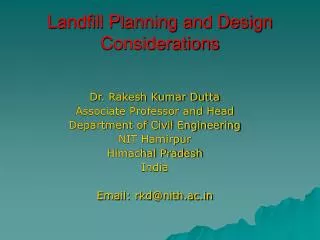
Landfill Planning and Design Considerations
Landfill Planning and Design Considerations. Dr. Rakesh Kumar Dutta Associate Professor and Head Department of Civil Engineering NIT Hamirpur Himachal Pradesh India Email: [email protected]. What is Waste?. Types. Solid Waste. Liquid Waste. Gaseous Waste. Classification of Waste.
2.68k views • 93 slides

Chapter 3 Special Considerations in Planning and Development
1. Competencies forSpecial Considerations in Planning and Development. Identify the various stakeholders in a proposed resort development and outline how their perspectives generally differ.Describe the process and tools used to determine the market feasibility of a proposed resort development.E
589 views • 15 slides
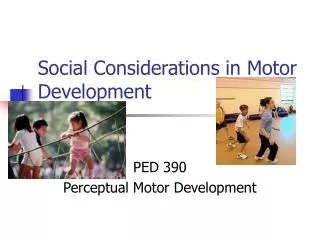
Social Considerations in Motor Development
Social Considerations in Motor Development. PED 390 Perceptual Motor Development. What role has socialization in a motor context had for these individuals?. Intro:.
446 views • 26 slides

Entrepreneurial Planning Considerations
Entrepreneurial Planning Considerations. Entrepreneurship 1 Section 2.09 A. Types of Entrepreneurial Planning. Strategic Planning and Operational Planning Both are formal plans implemented in the early stages of business growth, and both can be re-evaluated and re-designed at later stages.
319 views • 11 slides
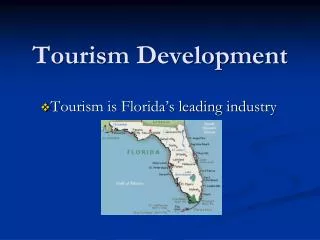
Tourism Development
Tourism Development. Tourism is Florida’s leading industry. Dixie County. Has significant potential for Nature & Cultural Heritage Tourism . Tourist Development Council (TDC).
433 views • 14 slides

Tourism attractions planning and development
Tourism attractions planning and development . Lecture 2. Alternative Tourism. ‘forms of tourism that set out to be consistent with natural, social and community values and which allow both hosts and guests to enjoy positive and worthwhile interaction and shared experiences’.
430 views • 17 slides

Tourism Attractions Planning and Development ( TM 451. ) ( Course Introduction)
Tourism Attractions Planning and Development ( TM 451. ) ( Course Introduction). Overall Aim of Course: . On successful completion of this subject students should be able to: 1. Sets the context by defining attractions, 2. looking at their role in tourism,
350 views • 19 slides
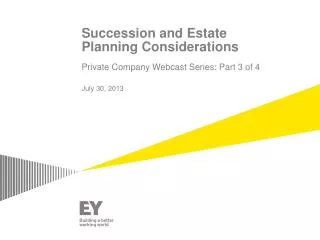
Succession and Estate Planning Considerations
Succession and Estate Planning Considerations. Private Company Webcast Series: Part 3 of 4 July 30, 2013. Meet our presenter . David Steinberg, CPA, CA Tax Partner & Co-Leader, Private Mid-Market Practice Contact Information: [email protected] 416.932.6206.
469 views • 28 slides
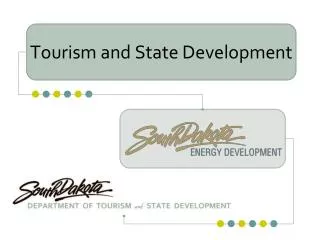
Tourism and State Development
Tourism and State Development. South Dakota Energy Infrastructure Authority. Funding Sources: The 2006 Legislature enacted Senate Bill 165 that authorized $247,000 to be used for the operations of the South Dakota Energy Infrastructure Authority.
486 views • 32 slides

Lecture 11 Tourism Planning, Development, & Social Considerations
Lecture 11 Tourism Planning, Development, & Social Considerations. Introduction. Good policy and sound planning needs to be conducted to ensure that a destination will be both competitive & sustainable. Planning for a Competitive/Sustainable Destination. Core Resources and Attractions:
882 views • 16 slides

TOURISM PLANNING & DEVELOPMENT 12-09-2005
TOURISM PLANNING & DEVELOPMENT 12-09-2005. TON TEPE. TODAY. TPDi : WHY? TOURISM PRODUCTS TOURISM SYSTEMS DESTINATIONS ~ PRODUCTS DESTINATION ~ COMPLEXITY & CONTEXT TOWARDS SUSTAINABILITY. TPDi role and function. TOURISM PLANNING ~ …… TOURISM DEVELOPMENT ~ ……
946 views • 34 slides

Financial Estate Planning Considerations and
Financial Estate Planning Considerations and Tax strategies for Executives and Business Owners. Whitney Hammond CFP, CLU Scott Sadler FSA, FCIA Steve Shillington CA, CFP, TEP. Agenda. Comprehensive planning Tax and estate planning strategies Life insurance ‘tax shelter’
529 views • 39 slides
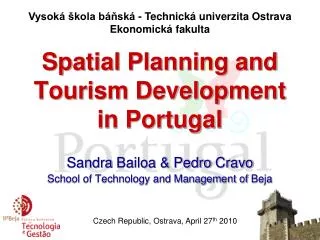
Spatial Planning and Tourism Development in Portugal
Vysoká škola báňská - Technická univerzita Ostrava Ekonomická fakulta. Spatial Planning and Tourism Development in Portugal. Sandra Bailoa & Pedro Cravo School of Technology and Management of Beja. Czech Republic, Ostrava, April 27 th 2010. Spatial Planning. Territory (the land).
1.21k views • 74 slides

Digital TV Development : Techno-Economic Planning Considerations
Digital TV Development : Techno-Economic Planning Considerations. John Yip Chief Engineer Radio Television Hong Kong 28 March 2007. 1. Introduction.
371 views • 26 slides

Tourism and State Development. Budgets. Governor’s Office of Economic Development. FY1999 to FY2009 Budget Comparison. General Fund $1,845,338. Funding Sources:
147 views • 8 slides
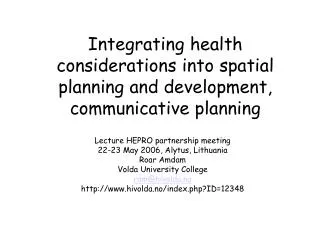
Integrating health considerations into spatial planning and development, communicative planning
Integrating health considerations into spatial planning and development, communicative planning. Lecture HEPRO partnership meeting 22-23 May 2006, Alytus, Lithuania Roar Amdam Volda University College [email protected] http://www.hivolda.no/index.php?ID=12348.
394 views • 20 slides

Tourism and State Development. South Dakota Housing Development Authority. FY1999 to FY2009 Budget Comparison Funding Sources: SDHDA is totally self-supporting and has received no State tax dollars or appropriations Federal Funds Administration fees for federal housing programs
388 views • 28 slides

TOURISM DEVELOPMENT
TOURISM DEVELOPMENT.
594 views • 31 slides
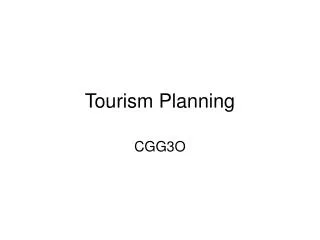
Tourism Planning
Tourism Planning. CGG3O. Tourist Development Plan. Outlines how a location will: Serve visitors Adapt to growing numbers of visitors Protect local culture and environment When areas become major tourists draws spontaneously, without planning, trouble ensues Poor services Overcrowding
344 views • 16 slides

Tourism Planning. Sheu, Ru-Shuo Ph.D . Department of Tourism, Hsing-Wu Institute of Technology . No. 101, Sec. 1, Fen-Liao Rd, Lin-Kou .Taipei 24452, Taiwan. [email protected]. Think Green , Live Green. Sustainability, Ecology ----- Travel GREEN!. Think Green , Live Green.
493 views • 16 slides
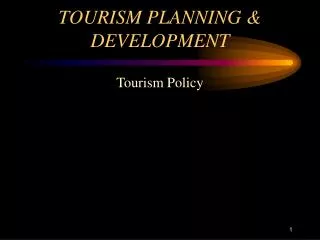
TOURISM PLANNING & DEVELOPMENT
TOURISM PLANNING & DEVELOPMENT. Tourism Policy. TODAY. Case study “Kenya” Describe the elements of tourism Policy model & how they are used to form a tourism policy for a destination
1.96k views • 35 slides

- My presentations

Auth with social network:
Download presentation
We think you have liked this presentation. If you wish to download it, please recommend it to your friends in any social system. Share buttons are a little bit lower. Thank you!
Presentation is loading. Please wait.
To view this video please enable JavaScript, and consider upgrading to a web browser that supports HTML5 video
Tourism Planning Lecture 3.
Published by Stewart Mathews Modified over 8 years ago
Similar presentations
Presentation on theme: "Tourism Planning Lecture 3."— Presentation transcript:
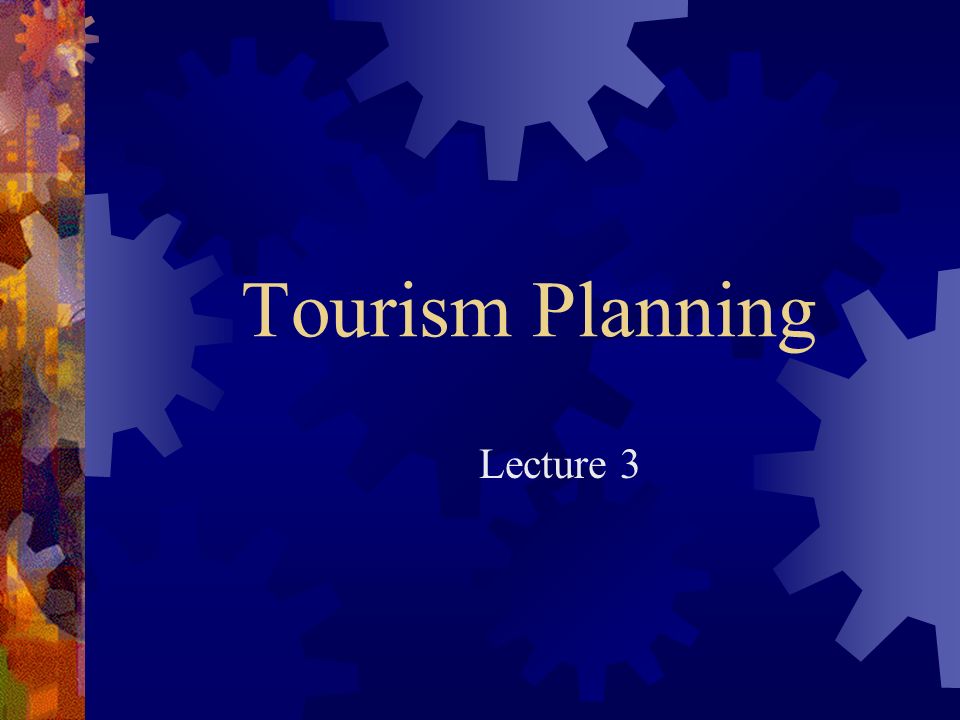
UNEP Sustainable Tourism Framework Impacts of Tourism impacts/

North-East Columbia Sub-Area Plan May 20 Informational Sharing and Gathering.

Ad Hoc Working Group on The World at 7 Billion and Beyond: Promoting a Forward-Looking Vision of People-Centred Development POSSIBLE ROLE FOR FAO relating.

Institutional Element and Policy in Destination Management Pertemuan Matakuliah: G1174/Tourism Management and Planning Tahun: 2007.

Private Sector Challenges and Opportunities Inherent in advancing the Complete Visitor Economy Abid Butt Chief Executive Officer Banyan Tree Hotels and.

TOURISM PETER ROBINSON MICHAEL LÜCK STEPHEN L. J. SMITH.

Montenegro’s Tourism Satellite Account Goranka Lazovic, Ministry of Tourism and Environment of Montenegro, Slovenia, Dolenjske Toplice th October.

Cook: Tourism: The Business of Travel, 3rd edition (c) 2006 Pearson Education, Upper Saddle River, NJ, All Rights Reserved Chapter Eleven: Environmental.

SOCIAL POLICY GUIDELINES FOR MINING SECTOR IN AFGHANISTAN Harjot Kaur Senior Social Development Advisor, Ministry of Mines.

Sustainable Nova Scotia An Overview FMI February 20, 2008.

POSSIBLE ECONOMIC AND SOCIAL IMPACTS OF THE 25th UNIVERSIADE WINTER GAMES ON THE TRA1 NUTS 2 REGION NORTHEAST ANATOLIA DEVELOPMENT AGENCY.

Environmental Design and Land Use Chapter 21 Research Methodologies.

Ecotourism Project Project plan: November 4 What do you intend to do? How do you intend to do it? Field visits completed:December 2 Where have.

11th Edition Chapter 16: Tourism Planning, Development, and Social Considerations Tourism: Principles, Practices, Philosophies Part Four: Tourism.

Learning Objectives Demonstrate the critical importance of tourism policy to the competitiveness and sustainability of a tourism destination Outline the.

Presentation and Management of Heritage Assets

Jordan’s Tourism Strategy and Aspirations for the Future H.E. Issa Gammoh, Secretary General, Ministry of Tourism and Antiquities.

Tourism Planning CGG3O1 Lester B Pearson. What is tourism planning? In recent decades many places have turned to travel and tourism as a way to improve.

Cultural Impacts Tourism in the AAP Region. Cultural Impacts Ethnic Tourism – focuses on the customs of indigenous and exotic peoples Cultural Tourism.

Ecotourism Virginia State Parks. What is Ecotourism Defining "Ecotourism" a has proven to be a difficult task given all the different players attempting.
About project
© 2024 SlidePlayer.com Inc. All rights reserved.
Academia.edu no longer supports Internet Explorer.
To browse Academia.edu and the wider internet faster and more securely, please take a few seconds to upgrade your browser .
Enter the email address you signed up with and we'll email you a reset link.
- We're Hiring!
- Help Center

BASIC CONCEPT IN TOURISM PLANNING AND DEVELOPMENT

Related Papers
Ramon B A Alampay
This is the tourism chapter of The Civil Society Assessment of the 2004-2010 Medium Term Philippine Development Plan (MTPDP) produced by the Caucus of Development NGO Networks (CODE-NGO). The overall project assessed the performance of the Philippine Government relative to the MTPDP targets, and examined the responsiveness of the MTPDP framework to the development agenda of basic sectors and civil society. The paper finds that the MTPDP’s implied approach to poverty reduction from tourism tends to limit the scope and breadth of tourism’s poverty reduction effect to the priority tourism destinations and their vicinity. Nor does the Plan integrate the concerns for environmental sustainability and community involvement and empowerment. Forms of tourism such as ecotourism, agritourism and cultural tourism end up being treated by both DOT and the other government agencies as niche activities that are peripheral to their main activities. Recommendations are given to introduce a broader agenda for Philippine tourism based not only on growth, but also on equity and sustainability. From a single-minded focus on expanding the Philippine tourism industry, a multi-pronged program is recommended to also promote tourism as a complementary or alternative (where appropriate) development strategy for reducing poverty, promoting sustainable resource management, and empowering disadvantaged groups around the country.
Gracia Bacz
The paper examines tourism in the Philippines, a South East Asian nation which has yet to reach its potential as an international destination. Conditions in the country are analysed and possible reasons for its relatively poor performance are discussed. Various barriers to development are identified, but political circumstances emerge as a key consideration whereby instability in assorted manifestations has impeded the operation of the industry, investment and policy making. While experiences of destination development are distinctive, the particular example offers insights into general processes and underlying dynamics.
Philippine Institute for Development Studies, …
Divina Edralin
The Philippines, through tourism, aspires to become a stronger player in the integrated travel industry of today. Yet, the country realizes that in order to do so, it must conserve, protect and strengthen the cultural, historical and natural resources upon which the Philippines draws its unique competitive advantages. All these in a manner that can be sustained for the benefit and enjoyment of future generations of Filipinos. This book, a collection of research papers funded by the Philippine APEC Study Center Network (PASCN), reflects the scope and complexity of sustainable tourism development. The various papers also mirror the complexity of sustainable tourism development and hint at the multidisciplinary approach that this mode of tourism needs to succeed. Each paper applies a different disciplinary framework to its particular tourism problem: economics, sociology, anthropology, environmental science, management science, human resources development, and others. Each paper also provides a unique academic angle on sustainability and tourism.
I am just starting to gather data. I have not yet started making abstracts for my own research. these article is authored by someone else. it is another reference.
Jeric Dela Cruz
Domestic Tourism in Asia and the Pacific-UNWTO
Hossein Nezakati
Christian D Soler
Jos van der Sterren
Loading Preview
Sorry, preview is currently unavailable. You can download the paper by clicking the button above.
RELATED PAPERS
Mary Aniderf Maturan
Perspectives on Sustainable Tourism and Management at Archaeological and Heritage Sites
Noel Hidalgo Tan
Kenan Foundation Asia
Chayanun Saikrajang
Dianne Dredge
Pia Castillo
Daniel Josh Gatus
Nafees Imtiaz Islam
Varslee Jeb T . Vargas
ERCAN AKKAYA
Jonatan Gomez Punzon
Sweetie Feranmi
FORUM PROCEEDINGS
Carmela Bosangit
Rohit Bansal
Edgar Joshua Vasanthakumar
Char-lee Moyle
bhubbles carranza
Jutamas Wisansing
Leonidas Papakonstantinidis
Vikneswaran Nair
Rahmat Azam Mustafa
Stuart Green
Adele Ladkin
DR. ALAA ABUKHALIFEH
Mary Jean Abello-Camarin
Tevfik Demirciftci , Anil Bilgihan
Universiti Putra Malaysia (UPM)
Tessa Eka Darmayanti
Masitah Muhibudin
Michael Sto. Niño.
Ngan Nguyen
Siti Nur Liyana Shamshir
Elmer Mercado, EnP, fpiep
Charles Arcodia
- We're Hiring!
- Help Center
- Find new research papers in:
- Health Sciences
- Earth Sciences
- Cognitive Science
- Mathematics
- Computer Science
- Academia ©2024
- Preferences

Tourism Planning - PowerPoint PPT Presentation
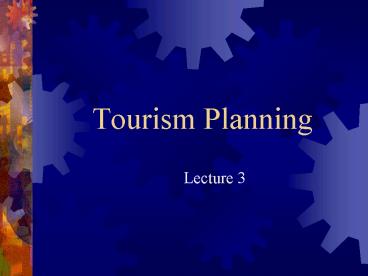
Tourism Planning
Tourism planning lecture 3 what is tourism planning in recent decades many places have turned to travel and tourism as a way to improve their economic and social ... – powerpoint ppt presentation.
- In recent decades many places have turned to travel and tourism as a way to improve their economic and social conditions.
- (examples developing countries encouraging tourism)
- Tourism in not an automatic cure for social and economic conditions, and it can sometimes lead to other problems itself.
- There must be careful planning and consideration of the costs and benefits of the tourism activity/facility.
- A tourism plan provides an overall vision social and economic goals for the area that wants to grow its tourism, and it provides a roadmap for the years ahead.
- Murphy (1985) suggests
- Planning is concerned with anticipating and regulating change in a system to promote orderly development so as to increase the social, economic and environmental benefits of the development process. To do this, planning becomes an ordered sequence of operations, designed to lead to the achievement of either a single goal or to a balance between several goals (p.156).
- Spanoudis (1982) proposes that
- Tourism planning must always proceed within the framework of an overall plan for the development of an areas total resources and local conditions and demands must be satisfied before any other considerations are met (p.314).
- Developing the tourist potential for an area is typically a joint effort between
- PUBLIC SECTOR (various levels of Government)
- PRIVATE SECTOR (For-Profit Businesses and Individuals)
- The Role of the Public Sector is to make the area desirable for the private sector to invest. This includes
- Constructing Workable Infrastructures
- (Transportation, water, sewage, parks)
- Providing Services
- (Education, health care, recreational)
- Promoting and Marketing the Region
- Providing Incentives
- - Financial (low interest loans)
- - Reduction in Costs (reduced tax on building materials, lower land costs, risk-free marketing, )
- They base their tourism planning decisions on what the tourists want and will buy
- They could be a large-scale private business (like a hotel chain) that is looking for new areas to expand into, or it can be a small-scale private business (bed breakfast)
- Ideally a tourism plan accomplishes the following
- What is the goal for increasing tourism , what is the business situation past, present and future, what is the market like
- Prepare a Preliminary Plan
- Approval of plan by stakeholders
- Developing a final plan
- Completing the project
- Tourism planning reveals that it operates at three levels
- The destination
- The region.
- Tourism planning provide a set of guidelines for the actions of
- The government
- Private sector organizations, corporations, businesses
- Interest groups
- Host communities
- - To optimize the contribution of tourism and recreation to economic prosperity, full employment, regional economic development, and improved international balance of payments.
- Socia-Cultural
- - To contribute to the personal growth and education of the population and encourage their appreciation of the local geography, history, and ethnic diversity.
- - To avoid encouraging activities that have the potential to undermine or denigrate the social and cultural values and resources of the area and its traditions and lifestyles.
- Market Development
- - To encourage the free entry of foreign visitors, while balancing this goal with the need to monitor persons and goods entering the country with laws protecting public health.
- Resource Protection and Conservation
- - To protect and preserve the historical and cultural foundations as a living part of community life and development and to ensure future generations an opportunity to enjoy the rich heritage of the area.
- - To ensure the compatibility of tourism, recreational, and activity policies with other broader interests in energy development and conservation, environmental protection, and judicious use of natural resources.
- Human Resource Development
- - To ensure that tourism has an adequate supply of professionally-trained skilled and managerial staff to meet its future needs.
- - To ensure that the education and training programmes and materials are available to meet the needs of tourism.
- Government Operations
- - To coordinate government activities related to tourism
- - To take a leadership role
- - To support the needs of tourists, residents and tourism businesses with appropriate legislation and administration.
PowerShow.com is a leading presentation sharing website. It has millions of presentations already uploaded and available with 1,000s more being uploaded by its users every day. Whatever your area of interest, here you’ll be able to find and view presentations you’ll love and possibly download. And, best of all, it is completely free and easy to use.
You might even have a presentation you’d like to share with others. If so, just upload it to PowerShow.com. We’ll convert it to an HTML5 slideshow that includes all the media types you’ve already added: audio, video, music, pictures, animations and transition effects. Then you can share it with your target audience as well as PowerShow.com’s millions of monthly visitors. And, again, it’s all free.
About the Developers
PowerShow.com is brought to you by CrystalGraphics , the award-winning developer and market-leading publisher of rich-media enhancement products for presentations. Our product offerings include millions of PowerPoint templates, diagrams, animated 3D characters and more.

TOURISM POLICY, PLANNING AND DEVELOPMENT Slides PPT - BBA-TT (PU)
Here, you find the chapter wise slides or PPT of the TOURISM POLICY, PLANNING AND DEVELOPMENT and also download the all slides for free.
Got any suggestions?
We want to hear from you! Send us a message and help improve Slidesgo
Top searches
Trending searches

12 templates

68 templates

el salvador
32 templates

41 templates

48 templates

33 templates
Tourism Presentation templates
Traveling is practically everyone's favorite activity. who doesn't like tourism whether it's sightseeing in a big city, a trip to aphrodisiac beaches or getting lost in high mountains like the alps or the himalayas, there's a type of tourism for everyone find your type with these creative designs..
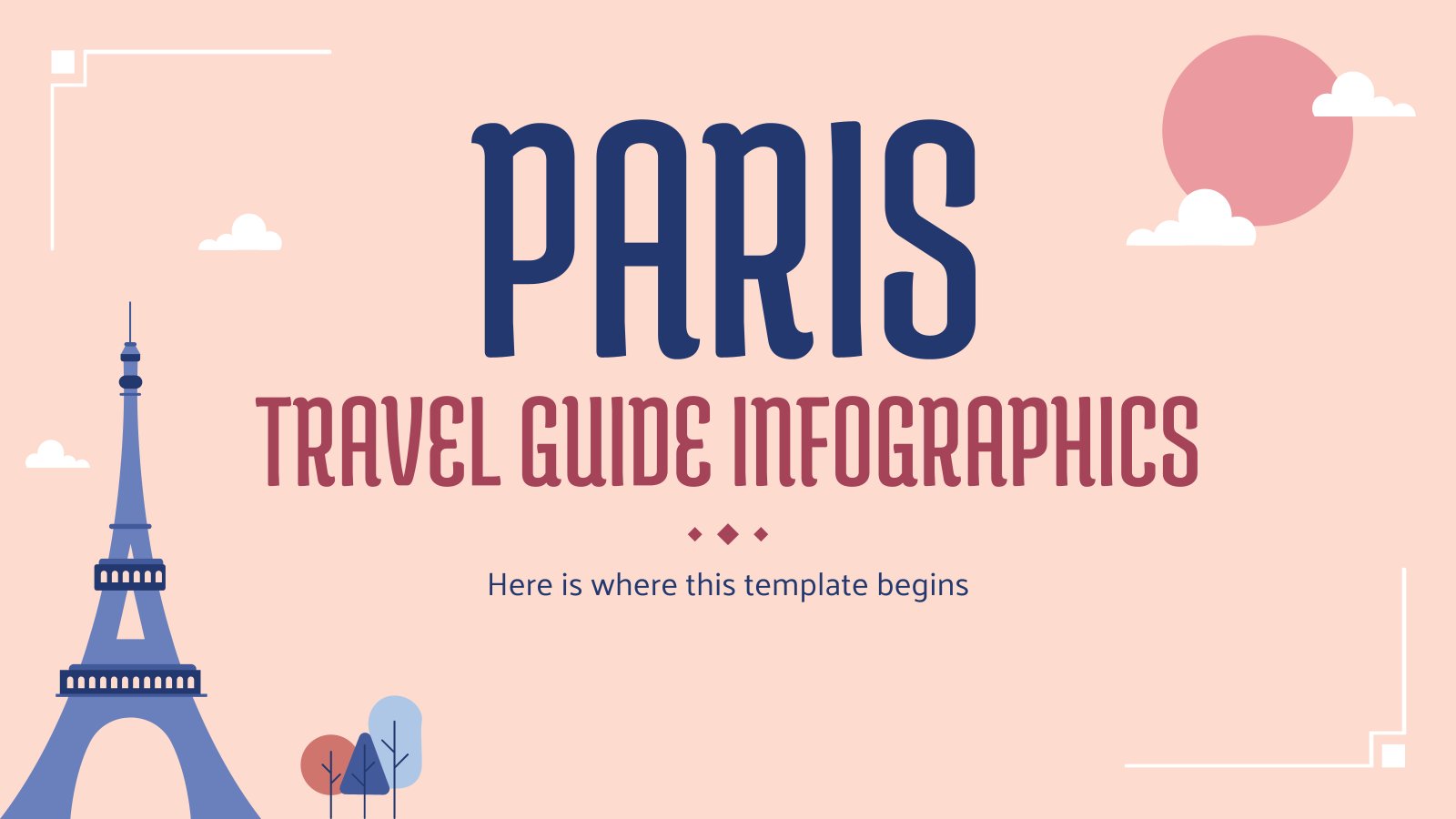
Premium template
Unlock this template and gain unlimited access
Travel Guide: Paris Infographics
Oh, là là, Paris, je t'aime ! If you are also in love with the French capital and want to create your own travel guide, this infographics template inspired by the city of light will be of great help. It has different resources, such as diagrams, timelines, graphs, lists, etc....

My Favourite Places to Travel List
Download the My Favourite Places to Travel List presentation for PowerPoint or Google Slides and start impressing your audience with a creative and original design. Slidesgo templates like this one here offer the possibility to convey a concept, idea or topic in a clear, concise and visual way, by using...

Rural Holidays Agency
A good presentation meant for agencies that offer rural holiday packages needs to have some nature-related visuals, right? Use our template filled to the brim with illustrations and edit the layouts to include all about your company. Maps, customer reviews, your services, your team… Everything needed is here!

Travel Guide: Albania
Download the Travel Guide: Albania presentation for PowerPoint or Google Slides and start impressing your audience with a creative and original design. Slidesgo templates like this one here offer the possibility to convey a concept, idea or topic in a clear, concise and visual way, by using different graphic resources....

Travel Itinerary Blog Social Media Strategy
Travel influencers are very trendy - who wouldn't love to see people traveling all over the world (even if it makes you a little envious at times)? Back on topic, it's a very successful social media theme - we've got something to tell you about it! Related to this theme,...

Caribbean Region Resort Marketing Plan
Download the Caribbean Region Resort Marketing Plan presentation for PowerPoint or Google Slides. This incredible template is designed to help you create your own marketing plan that is sure to impress your entire team. Using this amazing tool, you'll be able to analyze your target audience, assess your competitors, map...

Travel Infographics
Which country do you want to visit next? If you work in a travel agency, you can benefit from these infographics in your presentations, since all of them incorporate elements such as suitcases, airplanes, famous monuments, backpacks, maps and other related elements. You'll find calendars, timelines, graphs and much more...

Travel and Tourism 101 Workshop
If you love traveling, sightseeing, tourism and, in short, going on an adventure, then you'll most likely know not only the ABC of travel and tourism, but the equivalent to a C2 certification. Jokes aside, there are many things to take into account when traveling, so for the initiated, here's...
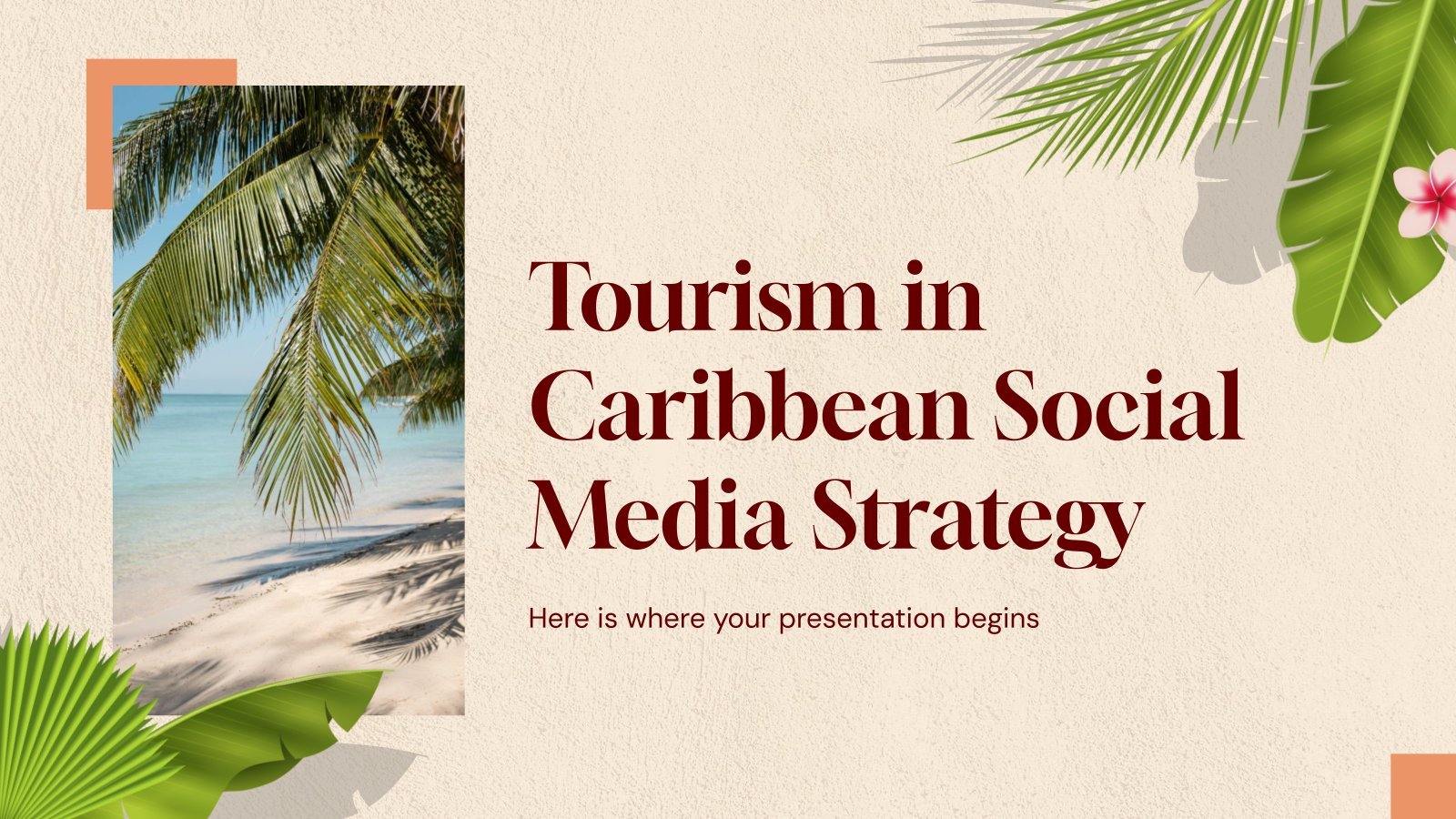
Tourism in Caribbean Social Media Strategy
Download the Tourism in Caribbean Social Media Strategy presentation for PowerPoint or Google Slides. How do you use social media platforms to achieve your business goals? If you need a thorough and professional tool to plan and keep track of your social media strategy, this fully customizable template is your...

Peruvian Gastronomy Secrets
Download the Peruvian Gastronomy Secrets presentation for PowerPoint or Google Slides and start impressing your audience with a creative and original design. Slidesgo templates like this one here offer the possibility to convey a concept, idea or topic in a clear, concise and visual way, by using different graphic resources....

Cream Paper Scrapbook - South Korea Travel Planning
Kept in the soft, creamy style of a scrapbook with cute, travel-related illustration stickers, this is the perfect template to get you in the mood for a nice long trip! Whether you want to use it as a checklist for travel planning, a travel diary or to tell your friends...
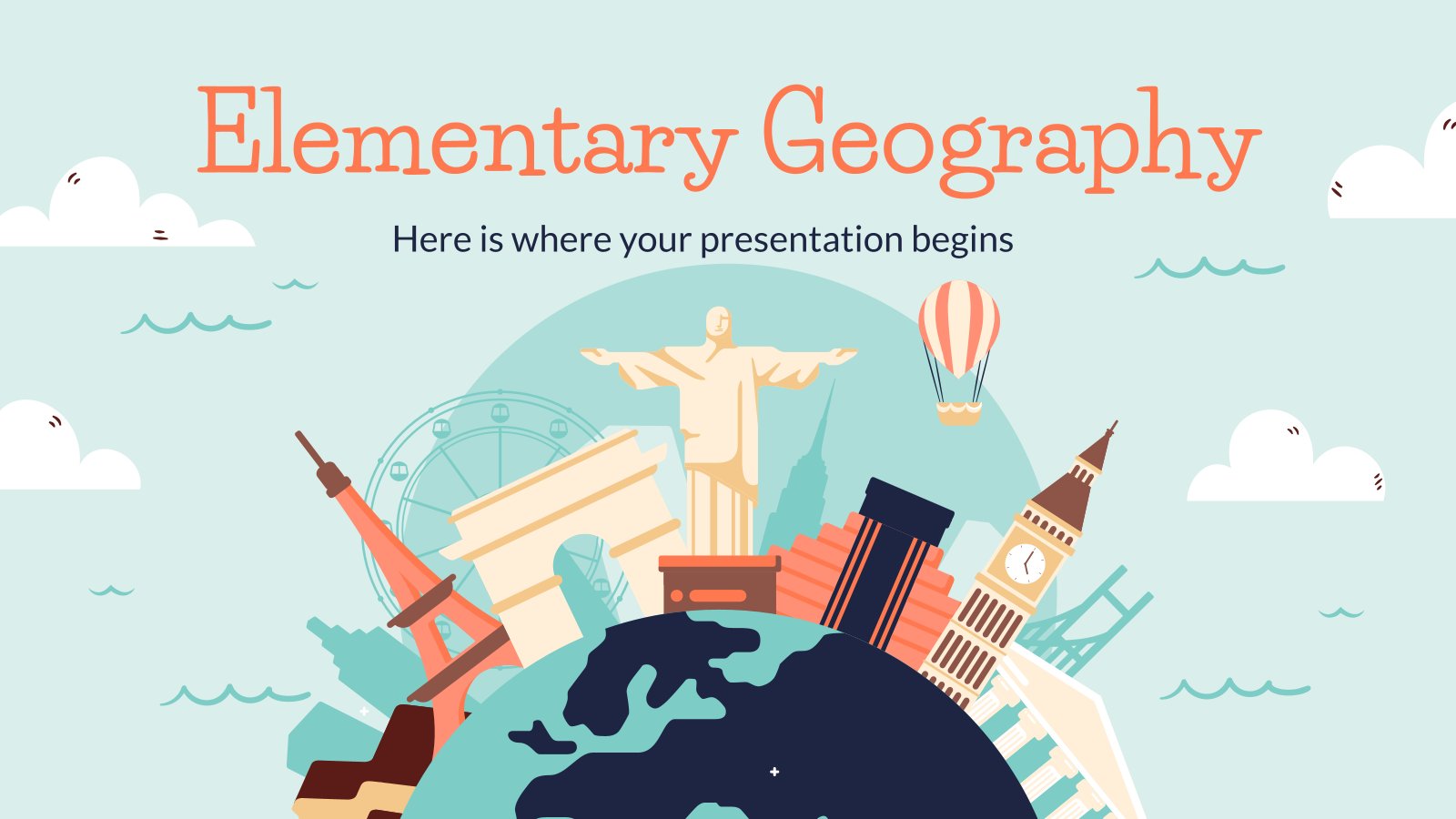
Elementary Geography Lesson
How many continents and oceans are there? What causes rain and earthquakes? It’s important for children to learn about the beautiful natural world they live in and there’s no better way to do that than through Geography classes. This educational presentation will help you do just that!

Dispersed Camping Trip Newsletter
Download the Dispersed Camping Trip Newsletter presentation for PowerPoint or Google Slides. Attention all marketers! Are you looking for a way to make your newsletters more creative and eye-catching for your target audience? This amazing template is perfect for creating the perfect newsletter that will capture your audience's attention from...
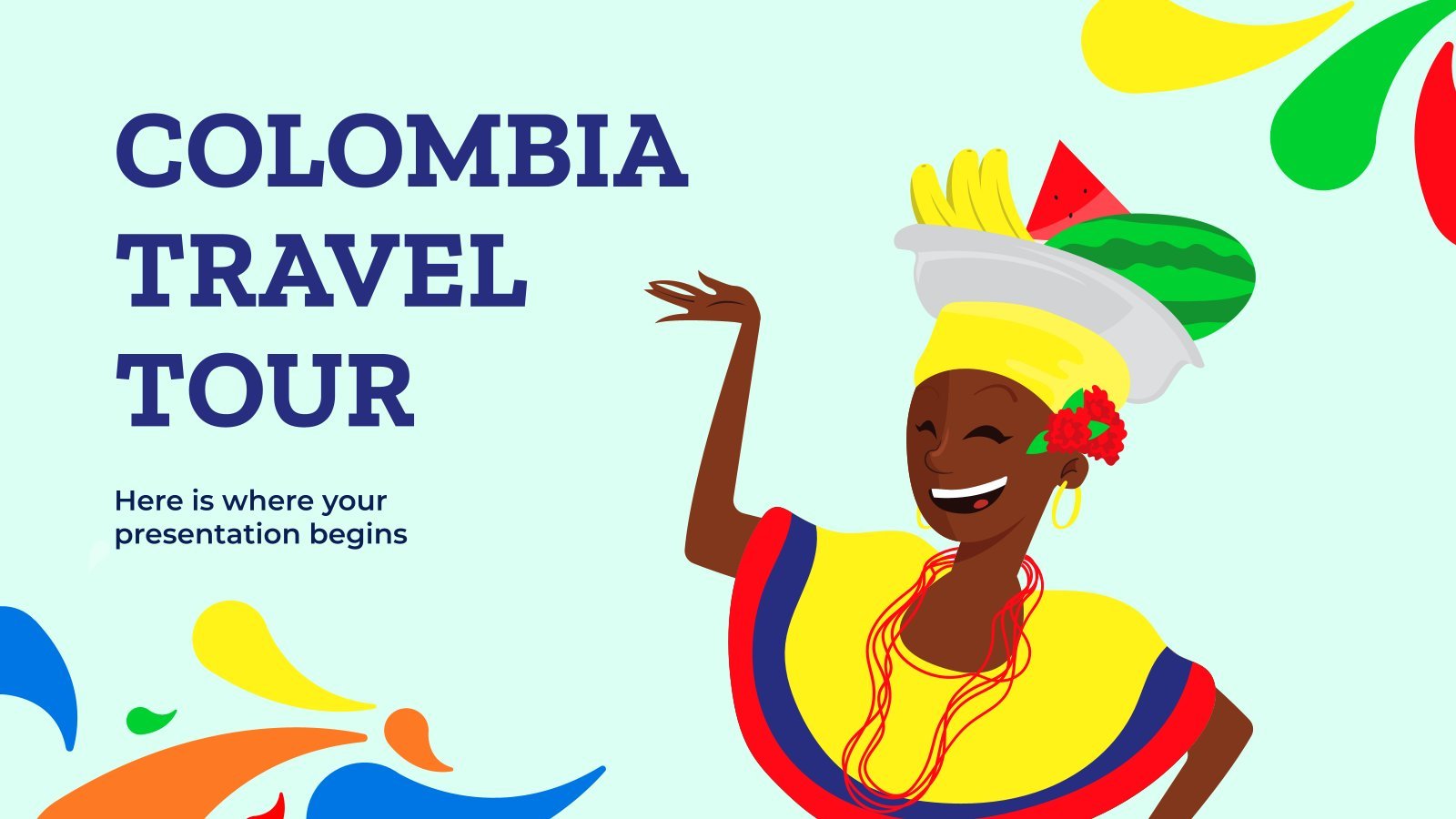
Colombia Travel Tour
Did you know that Colombia is one of the countries with the most biodiversity? Yeah, and it’s also the only country in South America with beaches in both the Pacific Ocean and the Caribbean Sea. Have we convinced you to visit this amazing country already? Then plan your trip with...

Tourism in the Balkans Marketing Plan
Download the Tourism in the Balkans Marketing Plan presentation for PowerPoint or Google Slides. This incredible template is designed to help you create your own marketing plan that is sure to impress your entire team. Using this amazing tool, you'll be able to analyze your target audience, assess your competitors,...

Tourist Attractions Social Media Strategy
In today's world, social media is everything. And if you're running a tourist attraction, you're expected to have a strong social media presence. It's not just about getting likes and shares, but also about improving the overall customer experience. With visually stunning slides (for example, the pictures are fixed to...

Travel and Transportation Vocabulary - German - 6th Grade
Download the Travel and Transportation Vocabulary - German - 6th Grade presentation for PowerPoint or Google Slides. If you’re looking for a way to motivate and engage students who are undergoing significant physical, social, and emotional development, then you can’t go wrong with an educational template designed for Middle School...
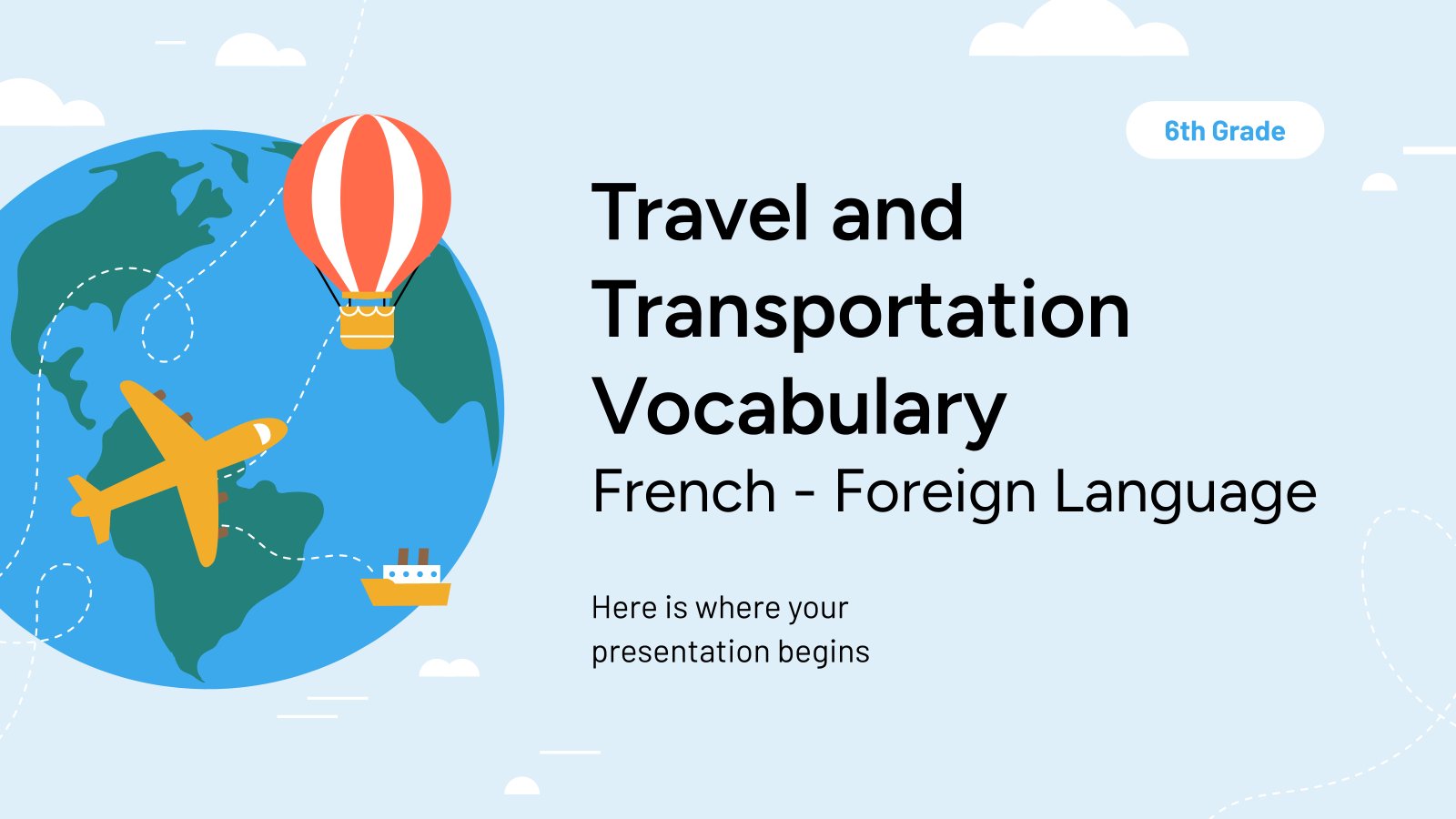
Travel and Transportation Vocabulary - French - 6th Grade
Download the Travel and Transportation Vocabulary - French - 6th Grade presentation for PowerPoint or Google Slides. If you’re looking for a way to motivate and engage students who are undergoing significant physical, social, and emotional development, then you can’t go wrong with an educational template designed for Middle School...
- Page 1 of 22
New! Make quick presentations with AI
Slidesgo AI presentation maker puts the power of design and creativity in your hands, so you can effortlessly craft stunning slideshows in minutes.

Register for free and start editing online

IMAGES
VIDEO
COMMENTS
46. 46 • Conceptual planning includes definite statements of objectives and policies for the proposed tourism project. These deal separately with the following facts: - The theme or character of the tourism project - The major resources to be developed - Environmental, social, and cultural aims and restrictions - Economic targets and returns Conceptual planning gives general ...
1 Course Name: TOURISM POLICY AND PLANNING (THM 420) T.C. ÇAĞ UNIVERSITY FACULTY OF ECONOMICS & ADMINISTRATIVE SCIENCES DEPARTMENT OF TOURISM MANAGEMENT Course Name: TOURISM POLICY AND PLANNING (THM 420) 1 INSTRUCTOR: Ceyda Melek CESEROĞLU TURKISH TOURISM DEVELOPMENT TURKISH TOURISM POLICY Turkish tourism policy dates back to 1963 with Five Years Development Plans.
A tourism policy is essentially a framework including guidelines, goals, and initiatives to work toward achieving the goals. Where as an act by government, such as the Travel Promotion Act of 2009 establishing Brand USA, is a law or statute. A policy for international travel is having a current passport and for many countries a Visa.
Tourism Plan and Development is imperative and utmost crucial in the tourism landscape as it propels ideas and emboldens concepts to its actualization and fruition. Tourism Policy, Planning at National, Regional and Local Level (based on slides by Dr. Johan Afendi bin Ibrahim)
The total contribution of Travel & Tourism to GDP (including wider effects from investment, the supply chain and induced income impacts) was VND270,637.0bn in 2012 (9.4% of GDP) and is expected to grow by 7.3% to VND290,389.0bn (9.6% of GDP) in 2013. It is forecast to rise by 6.3% pa to VND534,810.0bn by 2023 (9.4% of GDP).
1 Chapter 4 Tourism Planning and Development. 2 Learning Objectives Explain the reasons & purposes for tourism planning. Identify the barriers to tourism planning. Describe the steps in the tourism planning process. Describe and differentiate among tourism position statements, vision statements, goals, strategies, and objectives.
Recent Trends. Tourism is an important part of OECD member and partner economies, and a key sector within a growing services economy. On average tourism directly contributes 4.4% of GDP, 6.9% of employment ( Figure 1.1) and 21.5% of service related exports to OECD countries. Global tourism has steadily expanded for over six decades.
The national level of tourism planning is concerned with: tourism policy; infrastructure facilities and a physical structure plan which includes important tourist attractions, selected tourism development regions, international entry points, facilities, and services. It is also concerned with: the amount, kinds, and quality of accommodation and ...
Tourism Planning, Development, and Social Considerations. 16. Tourism Planning, Development, and Social Considerations. Learning Objectives. Identify the factors that determine the success of a tourism destination. Relate tourism planning to tourism policy. Discover what the goals of tourism development should be. 1.76k views • 12 slides
Tourism Plan and Development is imperative and utmost crucial in the tourism landscape as it propels ideas and emboldens concepts to its actualization and fruition. Tourism Policy, Planning at National, Regional and Local Level (based on slides by Dr. Johan Afendi bin Ibrahim)
16 Tourism Planning, Development, and Social Considerations. Learning Objectives Identify the factors that determine the success of a tourism destination. Relate tourism planning to tourism policy. Discover what the goals of tourism development should be. Recognize some serious barriers to tourism development must be overcome if a desired growth is to occur.
A tourism plan provides an overall vision social and economic goals for the area that wants to grow its tourism, and it provides a roadmap for the years ahead. 4 Planning Murphy (1985) suggests: Planning is concerned with anticipating and regulating change in a system to promote orderly development so as to increase the social, economic and ...
All these in a manner that can be sustained for the benefit and enjoyment of future generations of Filipinos. This book, a collection of research papers funded by the Philippine APEC Study Center Network (PASCN), reflects the scope and complexity of sustainable tourism development. The various papers also mirror the complexity of sustainable ...
The subject emphasized on tourism planning at International, national, regional, state and local level. It is centric towards understanding of the key tourism planning and management. Course Outcomes. By the end of this course, students should be able to: understand the interrelationships between resource management and tourism planning and ...
A tourism plan provides an overall vision social. and economic goals for the area that wants to. grow its tourism, and it provides a roadmap for. the years ahead. 4. Planning. Murphy (1985) suggests. Planning is concerned with anticipating and. regulating change in a system to promote orderly.
TOURISM POLICY, PLANNING AND DEVELOPMENT Slides PPT - BBA-TT (PU) Here, you find the chapter wise slides or PPT of the TOURISM POLICY, PLANNING AND DEVELOPMENT and also download the all slides for free. Syllabus. Contents. Notes PDF. Questions. Slide PPT. Explore the education material with your benchpartner. Subscribe to our newsletter ...
These presentation templates are suitable for tourism-related presentations. They can be used by travel agencies, tour operators, hotels, and other businesses in the tourism industry to showcase destinations, travel packages, and services to potential customers. Create captivating presentations about tourism with these Google Slide templates.
Download the Tourism in the Balkans Marketing Plan presentation for PowerPoint or Google Slides. This incredible template is designed to help you create your own marketing plan that is sure to impress your entire team. Using this amazing tool, you'll be able to analyze your target audience, assess your competitors,...
7. Tourism Planning Terms and ReferencesTourism Planning Terms and References 1. Objective - what is to be expected, to be achieved in planning for tourism development 2. Policy - the approach applied to guide and determine decision-making; expressed in terms of a set of statements and relates directly to the development objectives; 3.